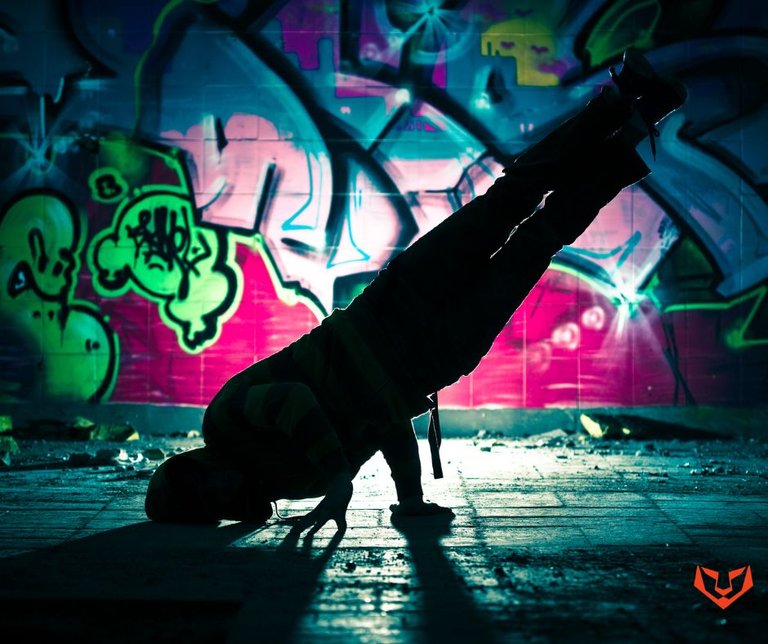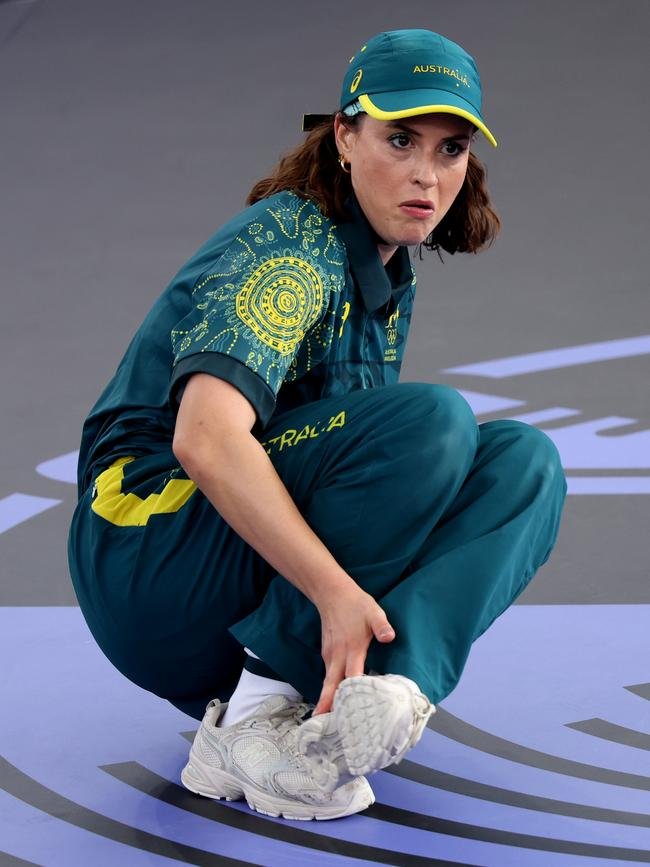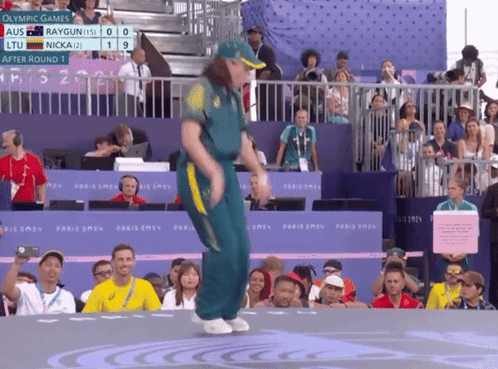
Breaking Bad: Australia’s Olympic Failure
In the world of hip-hop breaking which is often referred to as breakdancing, has always been more than just a dance form, it’s a cultural movement. Born on the streets of New York in the 1960s, breaking quickly became a symbol of rebellion, creativity and identity for marginalized communities. For many, it offered an escape from the harsh realities of inner city life, providing a platform for self-expression and a means of earning respect within a community.
Fast forward to today and breaking has evolved into a global phenomenon, with dancers from all walks of life participating in competitions worldwide. However, as the dance form has grown in popularity, so too has the scrutiny surrounding who gets to represent this culture on the global stage.
Recently, an Australian breaking dancer has found herself in the spotlight, attracting both admiration and criticism. Her rise to fame has sparked a debate about authenticity, representation and the true essence of breaking as a subculture. To understand the implications of what’s actually happening, it’s important to first delve into the roots of breaking and who it was originally intended for.

Origins of Breakdancing
Breaking emerged from the streets of the Bronx in the early 1970s, during a time when poverty, gang violence and racial tension were rampant. The dance style was born out of block parties, where DJs would spin records and MCs would rap over the beats, creating a vibrant atmosphere that encouraged creativity and self-expression.
For many African American and Latino youths, breaking became a way to channel their frustrations and escape the harsh realities of their environment. It was a dance for the underdogs, those who had been overlooked by mainstream society.
Breaking was more than just dance moves, it was a lifestyle. The b-boys and b-girls who pioneered the culture did so with a sense of pride and purpose. They were not just dancing; they were telling their stories, sharing their struggles and asserting their identities in a world that often dismissed them. The culture of breaking was and still is, deeply rooted in the experiences of marginalised communities.

[image source B-Girl Raygun of Team Australia competes during the B-Girls Round Robin. Picture: Getty]
Why The World Has Reacted The Way It Has
The emergence of an Australian breaking dancer on the global stage has raised eyebrows. Breaking has historically been dominated by dancers from urban, often minority backgrounds. Yet, here is a close to mid aged white woman from Australia with a Phd, a country far removed from the Bronx’s gritty streets and so disconnected from the disadvantaged marginalised Australian’s gaining widespread media attention and to add insult to injury, she was a total flop (literally).
Her rise to fame has been meteoric further fuelled by the class that breakdancing is completely against the upper-middle. While she has competed in and won numerous international competitions, earning praise for her technical prowess and unique style. Media outlets are celebrating her as a trailblazer, highlighting her achievements as proof that breaking is a universal language that transcends borders. However, not everyone is convinced.
Critics argue that while her success is commendable, it also highlights a troubling trend in the commercialization of hip-hop culture. Breaking, was never intended to be a global phenomenon detached from its roots. By elevating dancers who do not come from the culture’s traditional backgrounds, the media and Australia (surprise surprise) are diluting the very essence of breaking.
Her success has come at the expense of other dancers those who come from the same communities that birthed the culture, who may have been overlooked in favour of a more marketable face and held back due to financial constraints.
Australia has a rich and vibrant Hip-Hop Culture
Australia has a vibrant and growing hip-hop scene of its own. From Indigenous artists using rap to tell their stories to young dancers in urban areas honing their breaking skills, hip-hop has taken root in the country in a big way, in a way it is supposed to. The culture may have originated in the United States, but it has found new life and meaning in communities around the world, including Australia.
In cities like Sydney and Melbourne, hip-hop has become a powerful tool for self-expression, especially among marginalized youth. It offers a platform for young people to share their experiences, voice their frustrations, and connect with others who understand their struggles. For many, breaking is more than just a dance; it’s a lifeline, a way to navigate the challenges of growing up in a world that doesn’t always value their voices.

Coach Claims Sexism, We Say No
The controversy surrounding the Australian breaking dancer touches on a broader issue: who gets to represent hip-hop culture on the global stage? While breaking has certainly grown beyond its origins, the question of authenticity remains. For many within the hip-hop community, breaking is still a deeply personal and cultural practice. They argue that those who represent the culture on the world stage should have a connection to its roots, not just a proficiency in the dance moves.
Moreover, there’s a sense that by celebrating dancers who do not come from the culture’s traditional backgrounds, the media is overlooking the very people who need breaking the most. In Australia, as in the United States, breaking has the potential to change lives, especially for marginalized youth. By focusing on a dancer who doesn’t fit this cohort, it is taking away an opportunity from another young person—someone who may have been able to achieve their dream through breaking.
Furthermore, to add insult to injury we see sexism in sport used as a means to push down what has occurred which is totally unfair and unjust. Somehow it is men’s fault that the dancer flopped at the Olympics? What of all the young women from culture backgrounds that are professional dancers or even other white women that can dance? I know an abundance in this scene in my own community many with their own dance studios.
Australia has failed massively and no one knows how this one passed the keeper, but someone owes all the kids who missed out on representing their nation on the global stage an apology.
image sources provided supplemented by Canva Pro Subscription.
Posted Using InLeo Alpha
